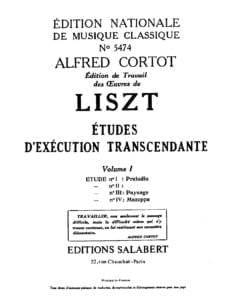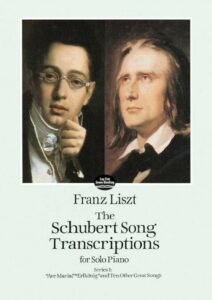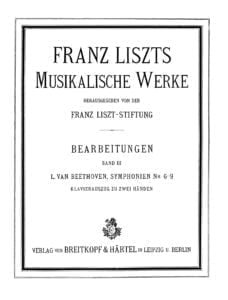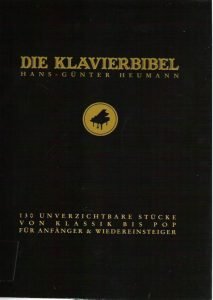Table of Contents:
Liszt (sheet music in the #smlpdf)

Liszt Liebesträume No. 3 Guitar Arrangement
Liszt – Liebestraum No.3 (Rêve D’amour) (Autre Édition)
Liszt – Prelude & Fugue in B minorr by Bach (13p)
Liszt – S172 Consolations
Liszt – S541 Liebestraume
Liszt – Transcription – Schubert – Song 18 – Standchen – ‘Leise Flehen meine Lieder’
Liszt – Wagner – Ouverture de Tannhauser.piano
Liszt Paganini Etudes Schirmer Gallico
Liszt Romance S. 169
Liszt S139 Transcendental Etudes Cortot
Liszt-Bach (BWV 543) Preludes Organ 2 S.462 4-6
Liszt-Bach (BWV 543) Preludes Organ S.462 1-3
Liszt-L idee fixe S.395 Mechetti 4164 0
Liszt-Schubert – Lied n.09 – Standchen von Shakespeare
Schubert Song Transcriptions For Solo Piano (Franz Liszt)
Bach Liszt Prelude & Fugue In A Minor, Bwv 543
Beethoven – Liszt Symphony no. 6 Pastorale piano solo arr.
Liszt-Bach (BWV 543) Preludes Organ S.462 1-6
Best Sheet Music download from our Library.
Please, subscribe to our Library. Thank you!

Liszt – The Best Of Liszt Solo Piano
https://www.youtube.com/watch?v=drezUKhT5HI
Track List:
00:00 Consolation No. 3, 04:18 Liebesträume No. 3 08:56 Romance, O pourquoi donc 12:34 Un sospiro 18:06 Au lac de Wallenstadt 21:29 Hungarian Rhapsody No. 2 31:02 La campanella 35:54 Ständchen 42:00 Auf dem Wasser zu singen 46:27 Étude No. 6, Grandes études de Paganini

Please, subscribe to our Library. Thank you!

Best Sheet Music download from our Library.
Franz Liszt
Franz Liszt (22 October 1811 – 31 July 1886) was a Hungarian composer, virtuoso pianist, conductor and teacher of the Romantic period. With a diverse body of work spanning more than six decades, he is considered to be one of the most prolific and influential composers of his era, and his piano works continue to be widely performed and recorded.
Liszt gained renown during the 1830s for his skill as a pianist. Regarded as one of the greatest pianists of the time, he toured Europe during the 1830s and 1840s, often playing for charity. In these years, Liszt developed a reputation for his powerful performances as well as his physical attractiveness. In a phenomenon dubbed “Lisztomania”, he rose to a degree of stardom and popularity among the public not experienced by the virtuosos who preceded him.
During this period and into his later life, Liszt was a friend, musical promoter and benefactor to many composers of his time, including Frédéric Chopin, Richard Wagner, Hector Berlioz, Robert Schumann, Clara Schumann, Hans von Bülow and Camille Saint-Saëns. Alongside Wagner, Liszt was one of the most prominent representatives of the New German School, a progressive group of composers involved in the “War of the Romantics” who developed ideas of programmatic music and harmonic experimentation.
Liszt taught piano performance to hundreds of students throughout his life, many of whom went on to become notable performers. He left behind an extensive and diverse body of work that influenced his forward-looking contemporaries and anticipated 20th-century ideas and trends. Among Liszt’s musical contributions were the concept of the symphonic poem, innovations in thematic transformation and impressionism in music, and the invention of the masterclass as a method of teaching performance. In a radical departure from his earlier compositional styles, many of Liszt’s later works also feature experiments in atonality, foreshadowing developments in 20th-century classical music.
At his performing peak, Liszt was considered the greatest pianist of his time, and was perhaps one of the greatest who ever lived. His popularity during the “Lisztomania” period of the 1840s was unrivalled, and the critic Peter G. Davis has written that “Perhaps was not the most transcendent virtuoso who ever lived, but his audiences thought he was, and no pianist since has seriously challenged the legend.”
Compositions
Romantic music generally fell out of favour during the first half of the 20th century, as composers such as Stravinsky, Schoenberg and Bartók took the art form in new directions. Liszt’s music seemed “flamboyant and excessive” in contrast with their leaner styles, and his work had neither become part of the established canon nor received credit for being avant-garde.
His piano music received attention from few pianists during this period, and only a few select popular pieces such as the Liebesträume and Hungarian Rhapsodies were published in collections. Two notable champions were Ferruccio Busoni, who delivered all-Liszt recitals in Berlin in 1904–1905 and 1911, and Humphrey Searle, who organised concerts of Liszt’s chamber and orchestral music in the 1930s and 1940s. Of his orchestral works, only Les préludes and the Faust Symphony were performed regularly.
During the Romantic Revival of the 1950s, Liszt’s works and writings received greater attention, and scholars now appreciate the wide range and originality of his compositions.
In the decades since, recordings of the vast majority of his output have become available, and a complete edition of scores is being published, to modernise the previous such collection published by Breitkopf & Härtel in 1907–1936. Liszt competitions occur across the world, and Liszt societies promote his work.
Read full Liszt’s biography here.
